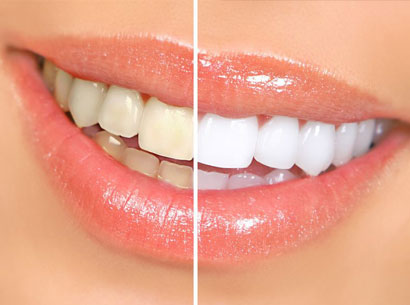Look Great!

Your smile is one of the first things people notice when they meet you. Having a great smile boosts your self-confidence and improves your overall well-being. That’s why we provide services that will have you looking and feeling your best. Expand the menus below to see our cosmetic solutions.
Jawbone volume can be lost due to periodontal disease, tooth loss, pressure from dentures or partial dentures, trauma, injury, or atrophy. This results in unsightly deformities or indentations in the bone which can produce an unattractive restoration, a cleansibility problem, or an inability to place dental implants. Hard and soft tissue reconstruction — to build back lost structure — is an effective procedure to either prevent volume loss or remedy it, thus improving appearance, allowing dental implant placement or both.
If you are missing a single tooth, a crown restored dental implant is the most natural looking way to replace it. It functions like a natural tooth and unlike a bridge, it doesn’t involve neighboring teeth. An implant preserves the bone, so naturally looking jaw contours are maintained. What’s more, a single-restored dental implant is much easier to clean and does not catch food like a bridge. And it doesn’t get cavities!
Sometimes teeth look short and square and have what might be termed a “gummy” appearance. Teeth are typically thought to be more esthetic if they are longer than they are wide. Gum tissue can be reshaped so that all of the enamel portion of the tooth is exposed, creating a more attractive tooth shape. Gum recontouring can be done without unexpected changes to the natural tooth. And having this procedure prior to preparation and placement of crowns or veneers makes for the “prettiest” smiles!
Invisalign® is a method of tooth movement using custom made clear smooth aligner “trays” to straighten teeth. They are made of invisible plastic that you wear over your teeth. This method of treatment helps correct conditions like crowding, spacing, deep bites, open bites, crossbites, narrow arches, and midline discrepancies. Invisalign® works without brackets, bands, or wires to gradually move teeth into the desired position. Because the aligners can be easily removed at any time, you can pop them out to eat, drink, and perform effective brushing and flossing. They are comfortable to wear and do not irritate cheeks and lips. And, since they are virtually invisible, no one knows you’re wearing them. Typical Invisalign® treatment takes about a year from start to finish.
 Imagine one hour to whiten teeth. That’s because, at Newhouse Periodontics, we use Philips Oral Healthcare’s Zoom!® chairside bleaching system. With this system, our patients with average teeth typically see a lightening of 3 to 7 shades with a single application. The entire process takes about one-and-one-half to two-hours from start to finish, though the actual bleaching process takes about an hour. And while results of how white you can get your teeth vary from patient to patient, we’re sure you’ll love the results.
Imagine one hour to whiten teeth. That’s because, at Newhouse Periodontics, we use Philips Oral Healthcare’s Zoom!® chairside bleaching system. With this system, our patients with average teeth typically see a lightening of 3 to 7 shades with a single application. The entire process takes about one-and-one-half to two-hours from start to finish, though the actual bleaching process takes about an hour. And while results of how white you can get your teeth vary from patient to patient, we’re sure you’ll love the results.
A frenum is a small fold of tissue that attaches the gums to the inner lips, cheeks, and tongue. At times, these attachments cause pulling on the gums when the cheeks, lips, or tongue are moved during everyday activities like eating, speaking, or brushing. Over time, these “pulls” cause the gums to recede or shrink away from the tooth causing root exposure or can even cause undesirable spaces between teeth.
A frenectomy is a procedure where the frenum is repositioned so that it no longer creates tension on thin tissue or keeps teeth apart. It is a simple procedure that is typically done with local anesthetic so there is no procedural pain. There is with little to no post-surgical discomfort or swelling.





